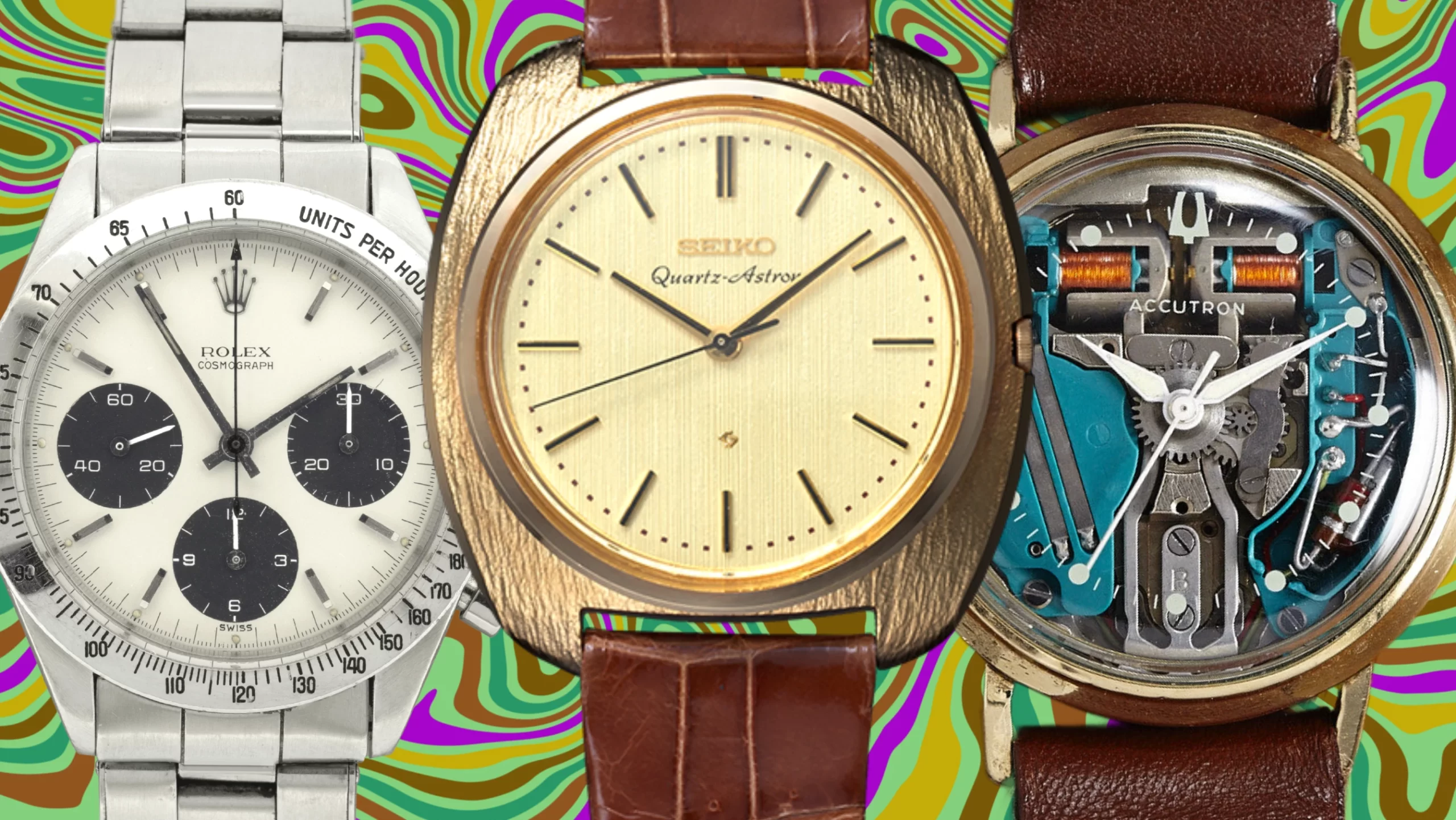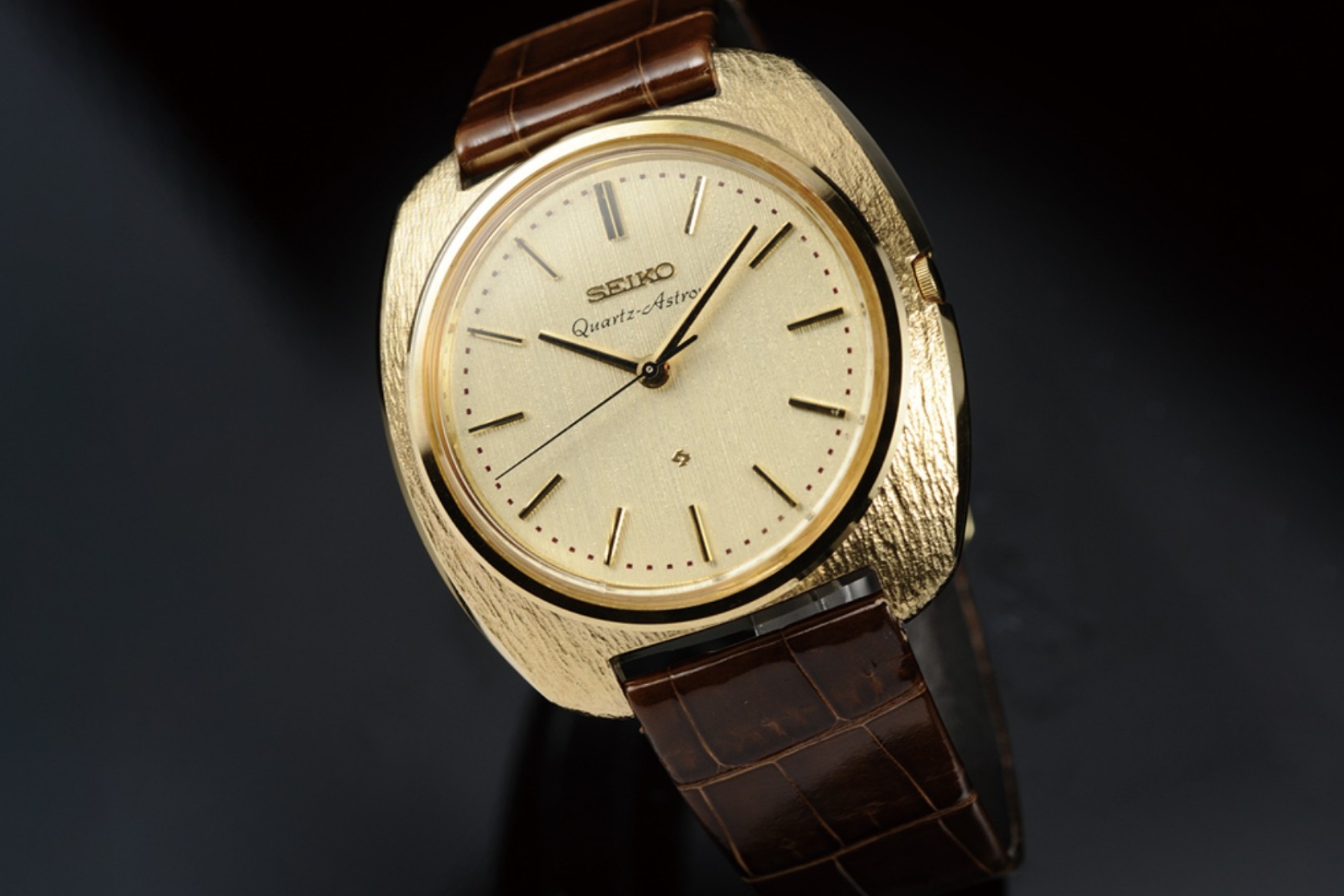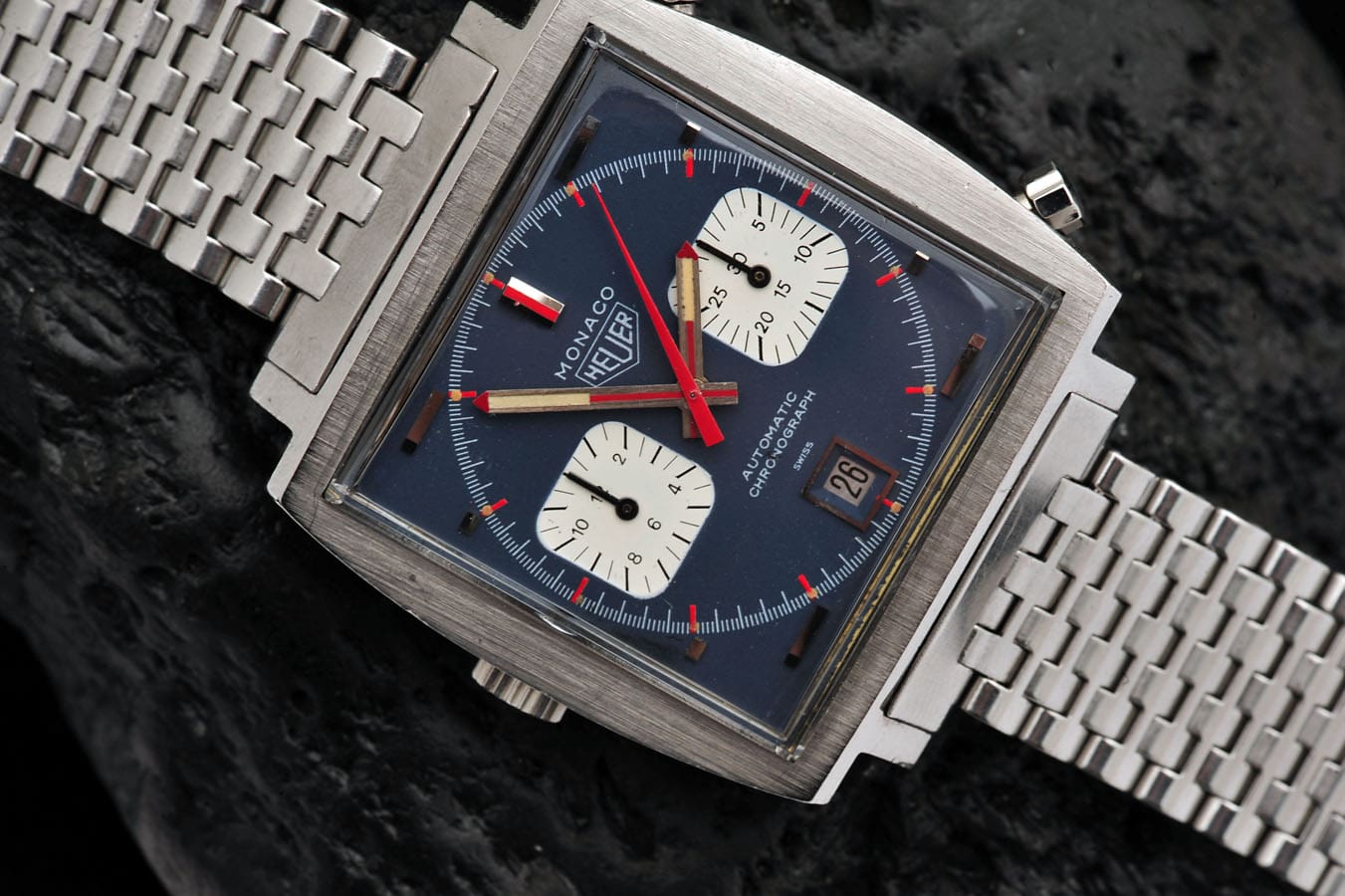
Try our newest merchandise
Jamie Weiss
The Nineteen Sixties was a memorable decade for a lot of causes – the rise of counterculture, humanity’s first steps on the Moon, the civil rights motion, the capsule and the sexual revolution – and fittingly, it was additionally a vital decade for the watch business. Not solely did the ’60s see the launch of many watches which have change into iconic names, however this decade additionally noticed two essential technological developments: the primary automated chronograph actions, in addition to the world’s first quartz watch, which might go on to utterly upheave the watch business, inflicting the so-called “quartz disaster” within the many years to observe.
Seiko Quartz Astron

Because the title of this text alludes to, one watchmaker arguably dominated the Nineteen Sixties greater than another – Seiko. This decade noticed the Japanese model mark many firsts: in 1964, they produced the primary Japanese chronographs and world timers; in 1967, they gained second and third place on the Neuchâtel Observatory chronometric trials, a coming-of-age second for Japanese watchmaking; in 1969, they might be the primary to convey an automated chronograph to market, the ref. 6139… Nonetheless, these achievements all pale compared to the Seiko Quartz Astron, the world’s first industrial quartz wristwatch.
Launched on Christmas Day in 1969 and costing about the identical as a Toyota Corolla, the Quartz Astron marked the start of the quartz revolution, inarguably essentially the most important paradigm shift the watch business has ever skilled. Correct to ±5 seconds per 30 days or one minute per yr, and boasting a battery lifetime of over a yr, it’s additionally an exquisite piece of design. The Quartz Astron can be emblematic of Japan’s post-WWII transformation into the financial and scientific powerhouse that it’s right now, with the Astron identify residing on with Seiko’s vary of modern GPS photo voltaic watches.
Bulova Accutron


Whereas quartz crystal oscillator-based watches have finally consigned electrical watches to the dustbin of historical past, 9 years earlier than the Seiko Quartz Astron was launched, there was one other digital watch that was poised to alter the watch business: the Bulova Accutron. Quite than utilizing a stability wheel, the Accutron utilised a tuning fork, vibrating at 360 instances per second, pushed by an electromagnetic coil system and powered by a dry-cell battery with no mechanical contacts.
Not solely did this make it extra sturdy and sensible than different electrical watch designs, however it additionally made it extra correct. With its smoothly-sweeping seconds hand and distinctive digital hum, the Accutron redefined luxurious and watchmaking – if just for just a few years.
Rolex Daytona


The Nineteen Sixties would show to be a prolific decade for Rolex, the Swiss model launching many watches which have since change into iconic: the eclectic Cellini King Midas, the now-archetypal Explorer ref. 1016, the buff Sea-Dweller and the even buffer Deep Sea Particular, which accompanied the primary profitable descent to the underside of the Mariana Trench. Nonetheless, no Rolex launch of the ’60s is as influential or pop culture-relevant because the Cosmograph Daytona, which within the years since has confirmed to be the Crown’s hottest mannequin.
Developed with motorsports utilization in thoughts, the unique ref. 6239 was initially referred to in Rolex advertising and marketing because the “Le Mans”, named after the well-known French endurance race, with the Daytona moniker sticking in 1965, a reference to Florida’s Daytona Worldwide Speedway. 1965 additionally noticed the Daytona graced with what at the moment are referred to as “unique” or “Paul Newman” dials, which on the time weren’t highly regarded however have grown to signify a few of the most coveted watches on this planet, full cease.
Heuer Carrera


One other watch of the 60s launched to capitalise on the rising recognition of motorsports was Heuer’s iconic Carrera. Named after the notoriously harmful Carrera Panamericana street race of the 50s and the brainchild of maverick CEO Jack Heuer, the unique Carrera ref. 2447 was impressed by modernist structure and designed for optimum legibility, and would show to be extra well-known than one other essential Heuer motorsports chronograph launched within the Nineteen Sixties, the Autavia wristwatch.
Eschewing an exterior tachymeter bezel in favour of a extra streamlined design, Jack Heuer focused the Carrera at gentleman racers, positioning it as a watch you possibly can put on from the monitor to dinner. One in every of its massive improvements was its “pressure ring”: an angular ring of metal that held the watch’s crystal in place, bettering its water resistance whereas additionally offering better visible depth (a design characteristic TAG Heuer has harkened again to with the present Carrera Glassbox).
The primary Grand Seiko


One other milestone for Seiko within the Nineteen Sixties was the launch of the very first Grand Seiko. Borne out of Seiko’s considerably arcane system of inside competitors – with the Daini Seikosha agency arising with the King Seiko line of watches and the Suwa Seikosha agency arising with Grand Seiko, in addition to different developments just like the Quartz Astron talked about earlier on this article – the Grand Seiko “First” was meant to be, as Seiko places it, “the ‘ideally suited’ watch with requirements of precision, sturdiness and wonder that might lead the world.” In essence, it was Seiko (and by extension Japan’s) first actual crack at making a luxurious timepiece.
The primary Japanese watch to be licensed by the Bureaux Officiels de Contrôle de la Marche des Montres in Geneva (on the time the world’s most revered chronometer testing physique), the Grand Seiko “First” set a brand new bar for refinement for Japanese watchmaking, ultimately inspiring the creation of an entire sub-brand. It may not have been well-known outdoors of its native Japan, however as of late, it’s straightforward to recognise how important it’s.
Heuer Monaco


In 1969, three considerations raced to launch the world’s first automated chronograph: Zenith, Seiko, and the Chronomatic consortium made up of Heuer, Hamilton, Buren, Dubois Depraz, and Breitling. Finally, Zenith can be the primary to announce their motion (therefore “El Primero” – “The First”)… Though it was truly Seiko who was the primary to get one to market, the ref. 6139, albeit initially solely in Japan. Nonetheless, the Chronomatic motion – and the watches that utilised it – nonetheless signify a few of the most essential horological developments of the Nineteen Sixties.
Hamilton and Breitling referred to as the motion the Chronomatic, whereas Heuer referred to as it the Calibre 11, and put it in a lot of watches, such because the Autavia and, you guessed it, the Monaco, which might be the one most well-known Chronomatic watch and has gone on to change into an iconic watch design in its personal proper. The Monaco was the world’s first sq. automated chronograph – a technical problem that Heuer overcame with aplomb – the Monaco would actually change into well-known within the 70s when it appeared on the wrist of Steve McQueen in Le Mans (1971). It’s wild to suppose that each the Monaco and Carrera, inarguably (TAG) Heuer’s most well-known fashions, each emerged within the 60s…
Zenith El Primero


As I simply talked about, the El Primero, Chronomatic and Seiko 6139 can all declare to be a few of the first automated chronograph actions. Nonetheless, the El Primero (which is each a motion and a watch) has confirmed to be essentially the most iconic of those three. It was additionally the one high-beat motion of the three, working on the increased frequency of 36,000 vibrations per hour – permitting for measurements of 1/10 of a second in addition to giving its chronograph hand an exceedingly clean sweep. 60 years later, derivations of the El Primero motion proceed to energy Zenith’s fashionable creations, and even by fashionable requirements, the El Primero is a incredible motion.
The fairytale story of its revival is equally as spectacular: going through the quartz disaster in 1975, Zenith determined to stop manufacturing of the El Primero. Nonetheless, watchmaker Charles Vermot took it upon himself to secretly defend the motion by gathering all its technical plans and tooling and hiding them within the manufacture’s attic, with Vermot solely revealing his secret within the Eighties when demand for mechanical chronograph actions returned (in addition to an enormous order from Rolex to provide actions for the Daytona). To this present day, the El Primero powers not solely a majority of Zenith watches however has been used extensively throughout the LVMH steady by manufacturers like Dior.

3 Pack Screen Protector Film, compatible with Rado R12.413.803 TPU Guard for Smart watch Smartwatch ( Not Tempered Glass Protectors )











